The existence of numerous languages spoken worldwide may seem like a simple outcome of human communication needs, but the underlying reasons are far more intricate. From the impact of historical events to the intricacies of cultural exchange, the diversity of languages reflects a myriad of factors that shape human societies. Understanding why people speak different languages delves into the very fabric of human interaction, evolution, and identity. By exploring the origins of language diversity, we unravel a tapestry of interconnected influences that have shaped the linguistic landscape we navigate today.
Key Takeaways
- Language diversification stems from historical, cultural, and geographical factors.
- Cultural influences shape unique vocabularies and linguistic structures.
- Indigenous language preservation safeguards cultural identities and heritage.
- Technological advancements and cultural interactions lead to language fusion and diversity.
Origins of Language Diversity
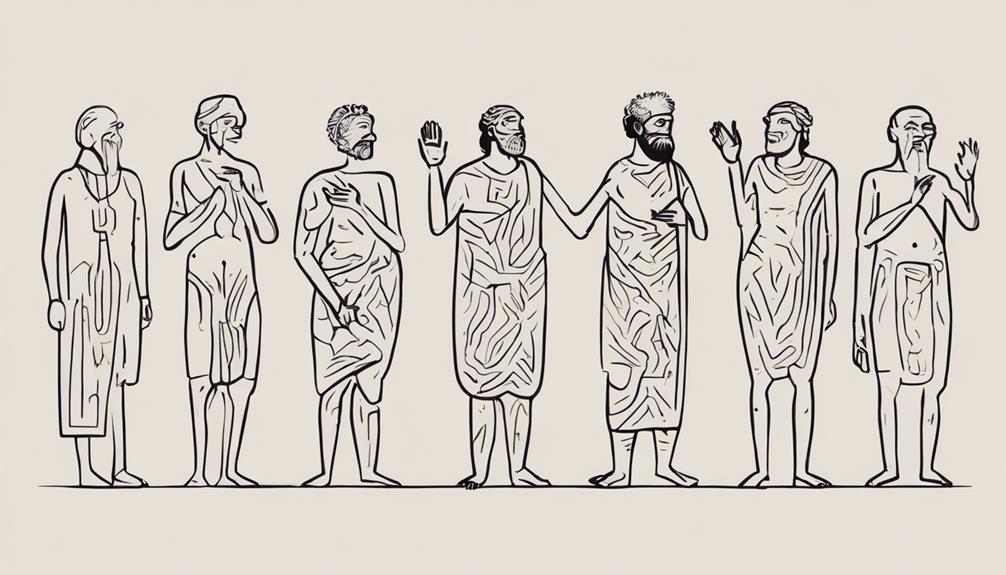
The complex origins of language diversity have long puzzled linguists and scientists, with various cultural narratives attempting to shed light on this intricate phenomenon. Human beings exhibit a remarkable ability to communicate through a wide variety of languages, reflecting the rich tapestry of human culture and history. The wide variety of languages spoken today can be traced back to the dynamic interactions of human societies over millennia.
Human DNA can be traced back to a single origin, suggesting that all human beings share a common ancestry. However, the development of different languages can be linked to human travel and migration patterns. As early humans dispersed across the globe, isolated populations began to develop distinct languages influenced by their unique environments and social structures. This process of linguistic diversification continues to shape the languages spoken today, highlighting the intricate relationship between human behavior, geography, and culture in the evolution of language diversity.
Evolutionary Theories on Language Development
Evolutionary theories on language development propose that the origin of languages stems from the imitation of natural sounds and the development of distinct words to address specific needs. These theories suggest that languages evolved independently worldwide due to varied backgrounds and necessities, highlighting the adaptation of languages to meet the changing demands of speakers. Additionally, the diversification of language is believed to have occurred through geographical separation and historical events, emphasizing the complex interplay of factors shaping linguistic evolution.
Origin of Languages
Originating from primitive vocalizations and rudimentary sounds, languages have evolved over time through intricate processes shaped by diverse human experiences and environmental factors. The origin of languages remains uncertain, with theories suggesting development from imitating natural sounds or basic sounds. Different groups of people developed distinct words based on their unique needs and ideas, leading to the independent evolution of languages worldwide. Early human communication likely began with imitating sounds and gradually evolved into structured languages, possibly varying across regions. This variation could have contributed to the vast diversity of languages seen today.
| Theories of Language Origin | Description |
|---|---|
| Onomatopoeia | Language development through imitating natural sounds |
| Bow-wow Theory | Language evolving from imitating animal sounds |
| Pooh-pooh Theory | Language originating from emotional exclamations |
Communication Evolution
Through an intricate process shaped by diverse human experiences and environmental factors, linguistic diversity emerged as a result of distinct communities developing unique vocabularies.
- Communication evolution: Language development potentially originated from imitating natural sounds or basic sounds.
- Linguistic diversity: Different groups formed distinct words based on their needs, leading to varied languages.
- Independent evolution: Languages diversified globally due to diverse backgrounds and necessities of communities.
- Uncertain origins: The lack of historical records makes the language's origin elusive, resulting in various theories on language development.
Communication evolution played a pivotal role in shaping the diverse array of languages we see today, with each community contributing to the development of its unique linguistic system.
Genetic Language Inheritance
The intricate interplay between genetic inheritance and language development has garnered significant attention in evolutionary theories, shedding light on the origins and complexities of linguistic diversity. Human DNA tracing back to a single origin provides substantial support for the theory of genetic inheritance in language development. Furthermore, the brain's inherent predisposition for language implies an evolutionary basis for the varied linguistic abilities observed. Studies, such as the one conducted by Northeastern University, indicate that the brain's sensitivity to frequent syllables might be an evolutionary trait influencing language development. It is proposed that common linguistic constraints on sound patterns could have evolved over time through genetic inheritance. Theories also suggest that language diversity may have stemmed from genetic variations among early human populations, further emphasizing the role of genetic inheritance in shaping languages.
Impact of Geographical Isolation
Geographical isolation plays a crucial role in shaping the linguistic diversity observed among human populations. When communities are separated by geographical barriers such as mountains, rivers, or deserts, several key impacts on language evolution and divergence can be noted:
- Distinct Language Development: Isolated groups may develop unique vocabularies and grammatical structures over time due to limited interaction with outsiders.
- Language Divergence: Limited contact with external populations can lead to language divergence, where languages evolve separately and become increasingly distinct.
- Geographic Barriers: Physical barriers hinder the exchange of language influences, contributing to the isolation of linguistic communities.
- Preservation of Language Features: Isolation can prevent the spread of language changes and innovations, allowing for the preservation of traditional language features within a community.
Cultural Influences on Language Variation
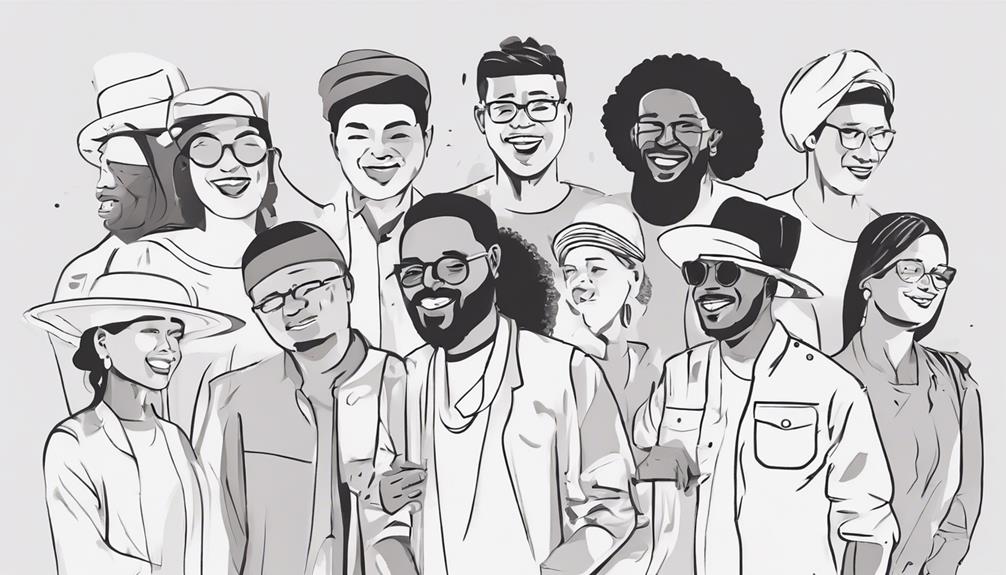
Influenced by cultural factors, language variation manifests as a reflection of societal norms and historical events within diverse communities. Cultural influences such as traditions, beliefs, and societal norms shape the development of different languages. Historical events like colonization and migrations have led to the diversification of languages within various communities. Local customs and practices often influence the vocabulary, grammar, and pronunciation of a particular language. Language variation can reflect social hierarchies, power structures, and societal values unique to each culture. The evolution of languages is intricately tied to the preservation and transmission of cultural heritage across generations.
| Cultural Influences on Language Variation | |||
|---|---|---|---|
| Factors | Impact | Examples | Outcome |
| Traditions | Shapes language development | Ceremonial language use | Language preservation |
| Beliefs | Influences vocabulary | Religious terminology | Dialect formation |
| Societal Norms | Affects grammar | Politeness markers | Accent variations |
Linguistic Diversity in Indigenous Communities
Linguistic diversity in indigenous communities plays a crucial role in preserving unique languages that connect individuals to their cultural heritage. These languages are integral to maintaining the identities of indigenous groups and contribute to the overall linguistic ecosystem. Efforts to protect and revitalize indigenous languages are essential for upholding cultural diversity and ensuring the survival of these distinct linguistic traditions.
Indigenous Language Preservation
Preserving indigenous languages within diverse communities is imperative for safeguarding cultural heritage and maintaining social cohesion.
- Indigenous languages worldwide demonstrate rich linguistic diversity.
- Factors such as colonization, globalization, and cultural assimilation threaten these languages.
- Language revitalization programs and oral tradition documentation are key preservation efforts.
- Indigenous language preservation is vital for upholding cultural identity, passing down traditions, and strengthening community bonds. UNESCO acknowledges the significance of protecting indigenous languages to uphold cultural heritage and encourage linguistic diversity.
Cultural Identity Connection
The preservation of indigenous languages within diverse communities is intrinsically linked to the preservation of cultural identities and traditions, embodying a crucial aspect of societal cohesion and heritage conservation. Different languages spoken in indigenous communities serve as a reflection of their unique cultural identities and historical ties to specific regions and ancestral heritage. These languages are not merely tools of communication but also symbols of cultural distinctiveness and social unity. The linguistic diversity present within indigenous groups plays a significant role in fostering a sense of belonging and strengthening bonds within the community. It is through the maintenance and revitalization of indigenous languages that the rich cultural tapestry of these communities is upheld, ensuring the continuity of their heritage for generations to come.
Linguistic Ecosystem Importance
High levels of linguistic diversity are a hallmark of indigenous communities, shaped by historical isolation and unique cultural practices.
- Language plays a crucial role in preserving indigenous knowledge, traditions, and oral histories within these communities.
- Linguistic diversity in indigenous groups reflects the rich biodiversity and cultural heritage of their regions.
- Many indigenous languages face the threat of extinction due to globalization, colonization, and the dominance of major languages.
- Efforts to revitalize and preserve indigenous languages are essential for maintaining the cultural identity and resilience of indigenous communities.
The linguistic ecosystem within indigenous communities is a delicate balance that holds immense value not only for linguistic diversity but also for the preservation of cultural heritage and the unique identities of these communities.
Role of Colonization in Language Spread
During the era of colonization, the global spread of European languages such as English, Spanish, and French was propelled by imperial powers, leading to significant linguistic transformations in various regions. Colonization often resulted in the suppression or replacement of indigenous languages by the languages of the colonizers. The imposition of colonial languages through education and administration had a profound impact on local languages, leading to linguistic shifts and endangerment among native populations. This process not only altered the linguistic landscape but also contributed to the loss of cultural heritage and identity for many indigenous communities.
The legacy of colonization continues to influence language diversity and the efforts towards language revitalization globally. Many indigenous languages face the threat of extinction as a direct result of historical colonization practices. Recognizing the role of colonization in shaping the current linguistic ecosystem is crucial for understanding the complexities of language spread, endangerment, and preservation in today's world.
Globalization and Language Interchange
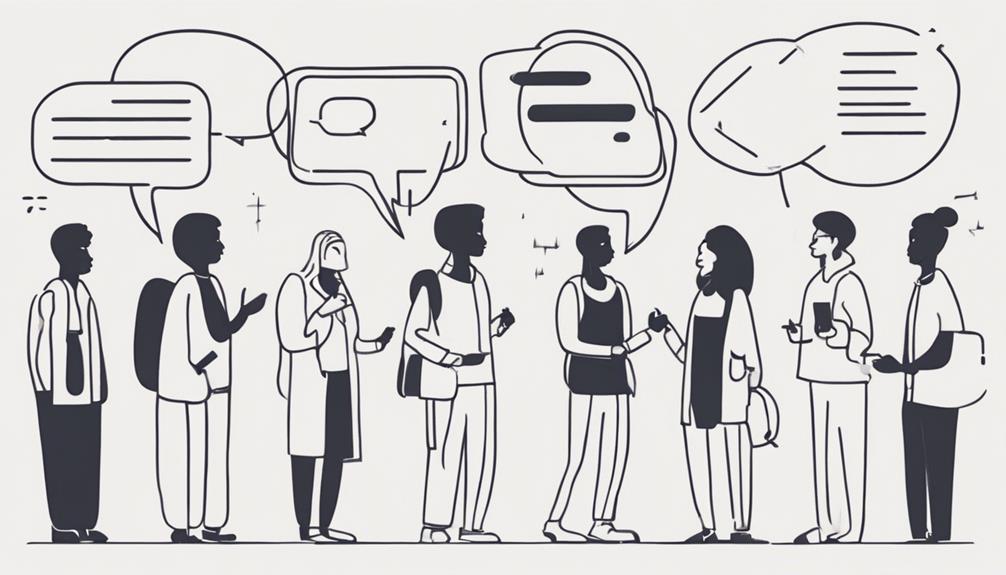
Globalization has revolutionized the way languages interact and evolve, with cultural influences playing a significant role in shaping linguistic landscapes. Technological advancements have propelled language evolution, fostering a diverse linguistic environment globally. The necessity for effective business communication has further underscored the importance of multilingual skills in bridging cultural and linguistic gaps.
Cultural Impacts on Language
The intricate web of cultural interactions in our increasingly interconnected world has significantly shaped the evolution of languages, particularly through the phenomenon of language interchange propelled by global forces.
- Globalization facilitates the spread of dominant languages, impacting cultural diversity.
- Language interchange, a result of globalization, leads to the blending of linguistic elements.
- Dominant languages play a crucial role in international communication and trade within the globalized world.
- Cultural exchange and migration contribute to the diversification of languages worldwide.
Efforts to preserve and revitalize endangered languages are crucial in maintaining cultural diversity amidst globalization's influence. This dynamic interplay between cultural impacts and linguistic diversity underscores the complexity of language evolution in a rapidly changing global landscape.
Technological Language Evolution
The pervasive influence of technology in contemporary society has significantly reshaped the evolution of languages by fostering a dynamic environment for global language interchange and innovation. Globalization, coupled with technological advancements, has facilitated increased language interchange and borrowing among diverse cultures. Social media platforms, the internet, language apps, and online translation tools have played crucial roles in enabling individuals to learn and use languages from different regions worldwide. The digital age has not only accelerated the spread of dominant languages but has also contributed to the preservation of endangered languages through online resources and communities. This interconnectedness through technology has created a space where languages spoken globally can interact, evolve, and adapt in ways that were previously unimaginable.
Business Communication Diversity
In the realm of modern business communication, the diversity of languages has become a pivotal factor in facilitating global interactions and fostering cross-cultural relationships.
- Globalization has led to increased business interactions, necessitating diverse languages for effective communication.
- Multinational companies require employees proficient in various languages to engage with a global customer base.
- Language diversity in business communication enhances cross-cultural understanding and relationship-building.
- Translation services play a vital role in facilitating smooth communication between international business partners.
This linguistic diversity not only enables smoother transactions but also opens doors to new opportunities for collaboration and expansion, making proficiency in multiple languages a valuable asset in the competitive global market.
Technology's Influence on Language Evolution
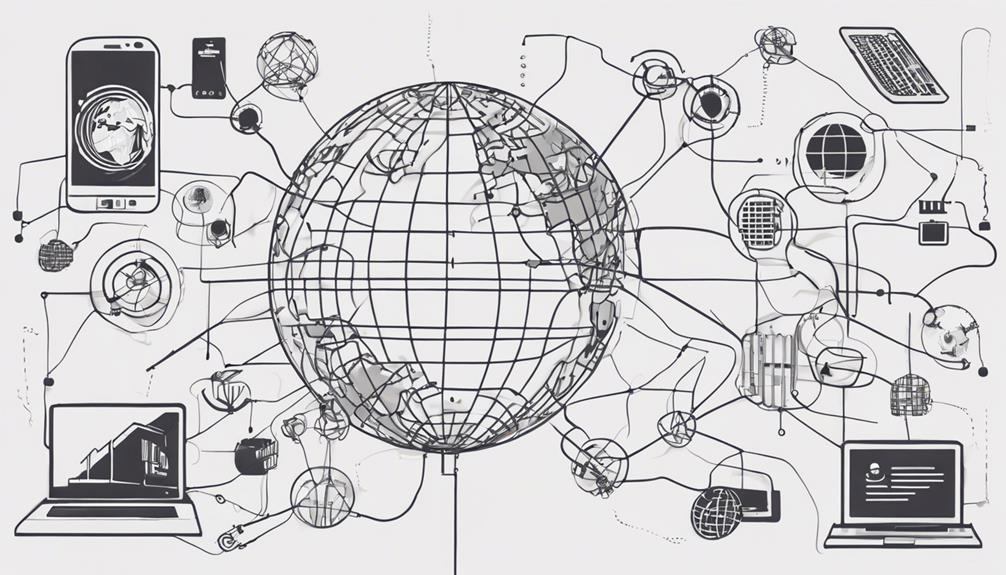
With the advent of technology, language evolution has been significantly influenced by the introduction of new vocabulary to describe digital concepts and devices. The rapid development of technology has necessitated the creation of words and phrases to articulate innovations such as artificial intelligence, virtual reality, and cryptocurrency. The internet and social media platforms have played a crucial role in disseminating these linguistic changes, enabling the swift adoption of new terms across different linguistic communities. Furthermore, instant messaging and texting have popularized the use of abbreviations and emojis in informal communication, altering the way individuals express themselves in written form.
Online communities and forums have also contributed to language evolution by fostering the development of specialized jargon and slang within specific interest groups. Moreover, advancements in voice recognition and translation software have revolutionized cross-language communication, facilitating interactions between individuals who speak one language and those who speak another. These technological advancements have reshaped language dynamics, influencing how languages interact and evolve in the modern digital age.
Linguistic Borrowing and Language Fusion
Language fusion and linguistic borrowing are intricate processes that underscore the dynamic nature of linguistic evolution and cultural exchange. These phenomena play a crucial role in shaping the diversity of languages spoken around the world. Key points to consider include:
- Language Fusion: This occurs when languages blend together, incorporating vocabulary, grammar, and pronunciation from each, resulting in the creation of new linguistic varieties.
- Linguistic Borrowing: Involves one language adopting words or phrases from another language, enriching its lexicon and reflecting cultural interactions.
- Historical Events: Factors such as colonization, trade, and cultural exchange often serve as catalysts for linguistic borrowing and language fusion.
- Cultural Influences: Language fusion can lead to the development of creole languages, pidgin languages, or mixed varieties that speak to the diverse cultural influences in a particular region.
Preservation Efforts for Endangered Languages
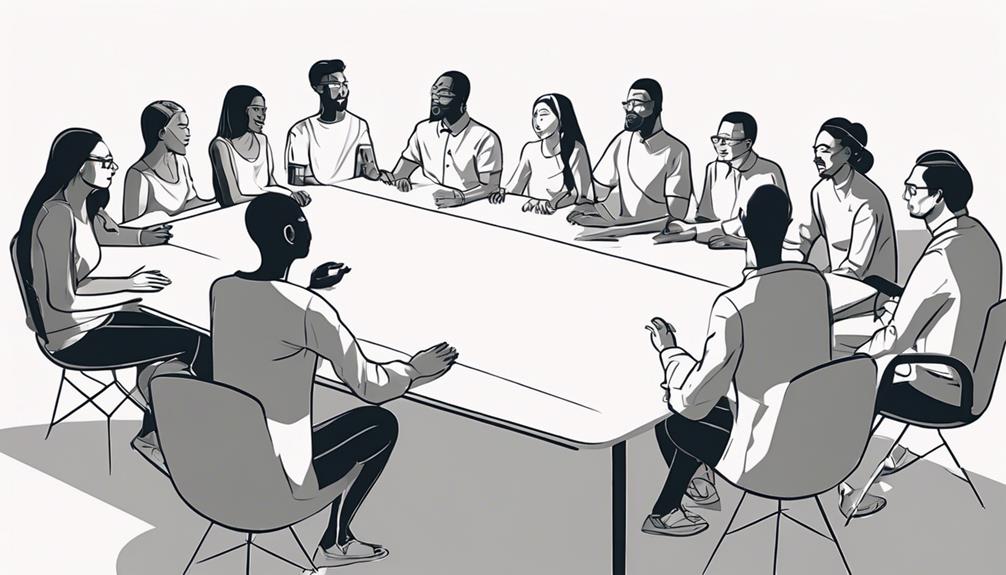
Efforts to safeguard endangered languages are imperative in preserving linguistic diversity and cultural heritage for future generations. With approximately 2,680 endangered languages worldwide facing the risk of extinction, initiatives led by organizations like UNESCO have been pivotal in raising awareness and implementing preservation strategies. Language preservation efforts often include language revitalization programs that focus on integrating endangered languages into educational curricula and community activities. Indigenous communities play a crucial role in these efforts by passing down their languages through generations and actively participating in language preservation projects. Collaborative endeavors involving the documentation and recording of endangered languages also contribute significantly to preventing their loss. By recognizing the importance of preserving endangered languages, societies can not only maintain linguistic diversity but also honor the rich cultural heritage embedded within these vulnerable linguistic systems. Through collective action and support, the ongoing preservation efforts for endangered languages can help ensure their survival and continued relevance in the global linguistic landscape.
Language as a Marker of Identity
The significance of language as a fundamental element of individual and communal identity underscores the intricate interplay between cultural heritage and linguistic expression.
- Language serves as a marker of cultural identity, reflecting unique traditions and heritage.
- The preservation of ancestral languages helps maintain a sense of belonging and connection to one's roots.
- Speaking different languages signifies diverse experiences and histories within a community.
- Language diversity enhances the richness of cultural tapestries, showcasing the uniqueness of various societies.
Languages are not merely tools for communication; they are deeply intertwined with the identity of people and communities. The way individuals speak, the words they use, and the expressions unique to their language all contribute to a sense of belonging and shared history. Embracing and preserving different languages is a celebration of diversity and a recognition of the multifaceted nature of human cultural identity. Through language, people not only communicate but also affirm their roots, values, and experiences, shaping a rich tapestry of cultural heritage.
Psychological Aspects of Multilingualism
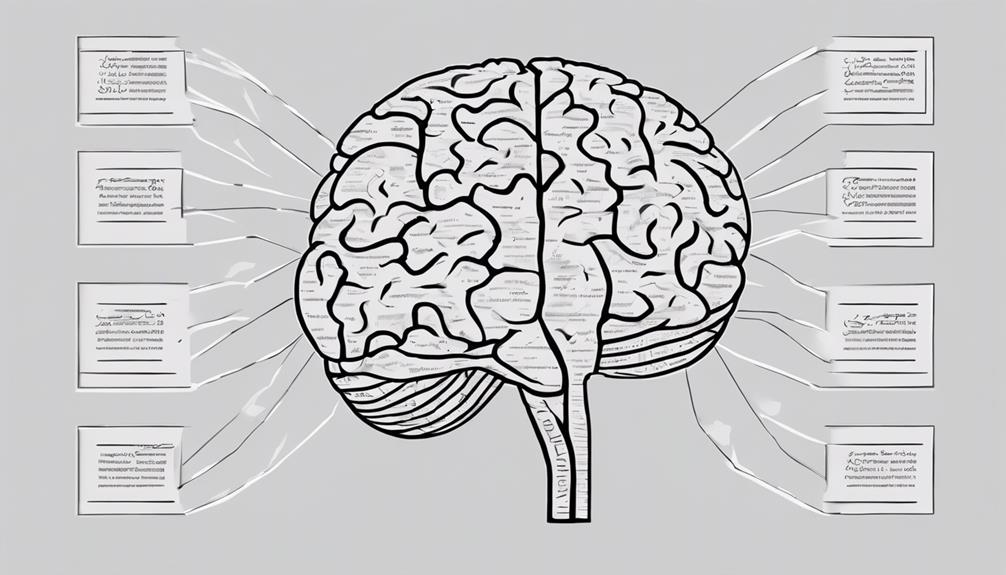
Given the profound impact of multilingualism on cognitive functions and brain plasticity, exploring the psychological aspects of speaking multiple languages provides valuable insights into the cognitive advantages that bilingual and multilingual individuals may possess. Multilingualism can lead to cognitive benefits such as better problem-solving skills, enhanced creativity, improved executive functions like multitasking and decision-making, and a reduced risk of cognitive decline in old age. Research suggests that multilingual individuals have a better ability to switch between tasks and focus their attention effectively.
| Psychological Aspects of Multilingualism | |
|---|---|
| Cognitive Benefits | Better problem-solving skills, enhanced creativity |
| Executive Functions | Improved multitasking and decision-making abilities |
| Cognitive Health | Delayed onset of cognitive decline, reduced risk of dementia in old age |
Language is a living entity that evolves with its speakers. The number of languages a person speaks can significantly impact their cognitive processes, highlighting the importance of understanding the psychological aspects of multilingualism.
Future Trends in Language Diversity
Anticipating future linguistic developments involves analyzing the evolving dynamics of language diversity on a global scale.
- Integration of New Technologies: The world is witnessing the integration of new technologies like artificial intelligence and machine translation, which may impact how languages are used and preserved.
- Emergence of Hybrid Languages: With increased global connectivity, there might be an emergence of hybrid languages that blend elements from multiple existing languages to facilitate communication.
- Preservation Efforts: Efforts to preserve endangered languages are gaining traction, aiming to protect linguistic diversity in the face of globalization.
- Shifting Language Dominance: The dominance of certain languages may shift as global power dynamics evolve, influencing which languages become more prominent in the world.
These trends highlight the dynamic nature of language diversity in a rapidly changing world, emphasizing the importance of adaptation and preservation efforts to navigate the complexities of a multilingual future.
Frequently Asked Questions
Why Do Humans Speak so Many Different Languages?
The vast array of languages spoken today is a testament to the complex evolutionary history and rich cultural diversity of human societies. Humans speak numerous languages due to a combination of factors such as historical migrations, environmental influences, and social interactions. The evolution of distinct languages over time reflects the dynamic nature of human communication and the diverse ways in which communities have adapted and developed unique linguistic systems to express their identities and worldviews.
Why Do We Not All Speak the Same Language?
Cultural diversity and linguistic evolution play crucial roles in the perpetuation of distinct languages among human populations. Encounters with varying cultures and historical influences have shaped the development of unique languages, contributing to the absence of a universal language. The intricate tapestry of human society thrives on the richness of linguistic differences, reflecting the complexity and beauty of our diverse world.
What Causes People to Speak Different Languages?
Languages are shaped by a myriad of factors, including cultural influences and societal norms. These elements play a crucial role in the development and evolution of distinct languages. Cultural exchanges, historical events, and societal structures all contribute to the diversity of languages spoken worldwide. As societies interact and evolve, languages adapt and change to reflect the unique characteristics and needs of their speakers, leading to the proliferation of different languages.
Why Do Individuals Speak Various Languages?
Language diversity is a product of cultural evolution, reflecting the intricate tapestry of human societies. Individuals speak various languages due to the rich history and unique development of their communities. This linguistic mosaic is a testament to the adaptability and creativity of human communication. As the adage goes, "Variety is the spice of life," language diversity enriches our understanding of the world and fosters connections across different cultures.
Conclusion
In conclusion, the origins of language diversity can be traced back to a variety of factors such as historical events, geographical isolation, and cultural influences. The preservation of lesser-known languages is crucial for maintaining cultural diversity and heritage. As globalization continues to impact language use, efforts to protect endangered languages are essential. Language not only reflects unique cultural identities but also serves as a marker of identity and a source of creativity and innovation in human societies.
